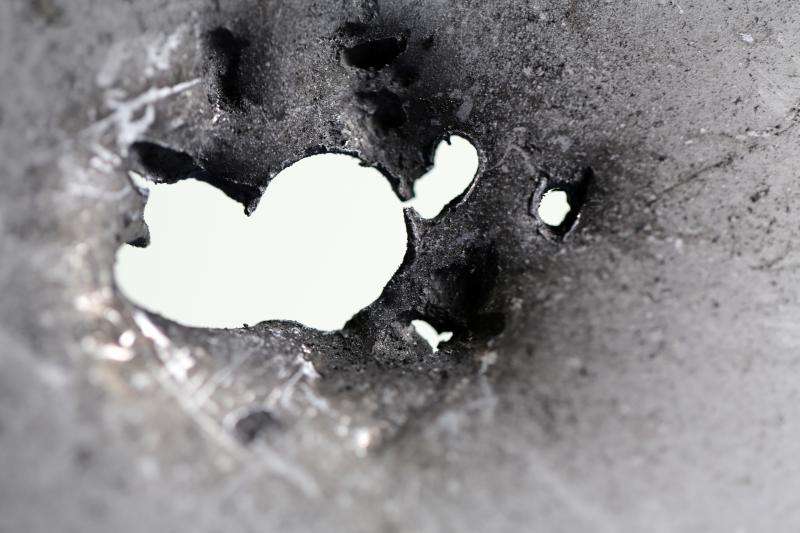Image: Hypervelocity impact test damage

An aluminium plate, ripped inwards by a single sand grain-sized fleck of aluminium oxide shot at it during hypervelocity testing.
Man-made space debris and natural meteoroids moving at high speed can damage satellites and constitute a serious hazard to spaceflight, especially human spacecraft.
Typical impact speeds encountered by satellites are 10 km/s for space debris and 20 km/s for meteoroids – some 10–20 times faster than a bullet from a gun.
Measuring approximately 15x15 cm across, the 1.2 mm-thick plate is displayed outside the Materials and Electrical Components Laboratory of ESA's ESTEC technical centre in Noordwijk, the Netherlands. The main hole, seen here, measures 28x12 mm across, with a few smaller adjacent holes.
ESA engineers typically use numerical simulations to study the potential effects of hypervelocity impacts on missions.
In addition, ground-based hypervelocity tests are performed at several test sites in Europe. Light gas guns are available at the Ernst-Mach Institut (Germany), CISAS (Italy), Centre d'Etudes de Gramat (France), The Open University and University of Kent (UK).
Electrostatic accelerators, also used for hypervelocity testing, are used at the Max-Planck Institut für Kernphysik (Germany), The Open University and the TU Munich.
Provided by European Space Agency




















